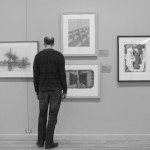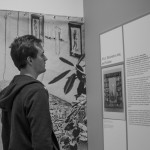Guest post by Marissa Pilolli, an intern at the Beach Museum of Art, and The Gordon Parks Project. Marissa has a Bachelor’s in Art History and Religion and Certificate in Museum Studies from Florida State University.
The initial idea to photograph museums came to me this past spring semester just before I left for a spring break study abroad trip to London. At the time, I was also enrolled in a darkroom class and we were expected to return after the break with images for a critique. In my mind, it made perfect sense to save myself some steps and photograph my time in London, which happened to be mostly composed of visiting museums. It wasn’t until I returned home and began processing my film that I realized the photos served more of a purpose than simply documenting my time abroad; they became a starting point for me to justify decisions I was making in other classes. I learned from my photos (at least on a rudimentary level) how visitors were spending their time in each museum.
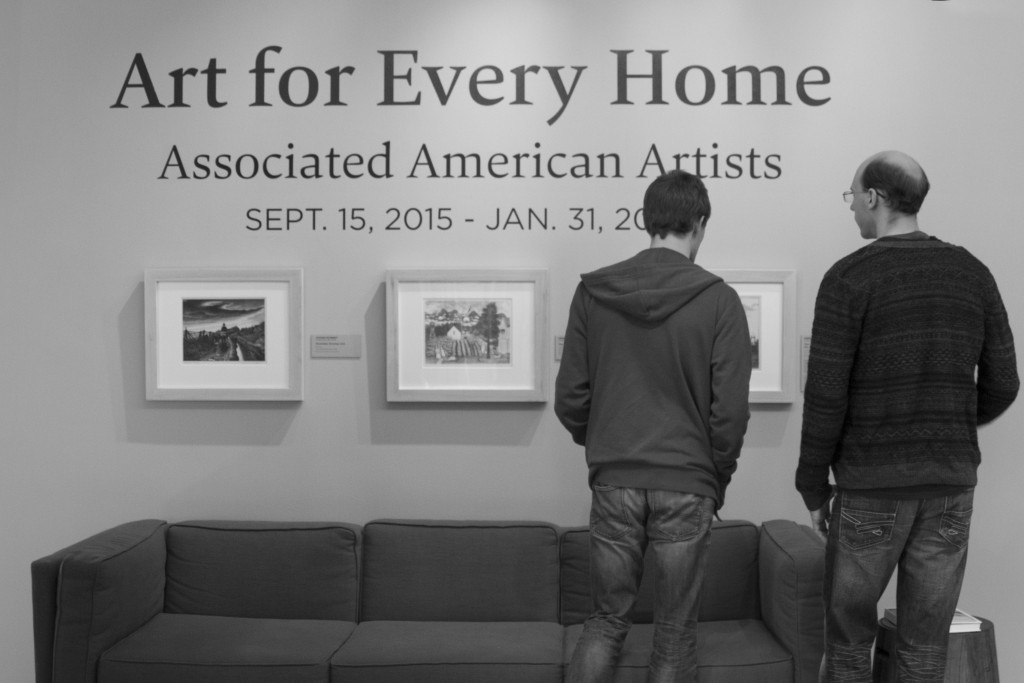
You can learn a lot from exposure settings alone. For example, if you are using a slow shutter speed and only stationary objects are in focus, you can tell that visitors were not spending much time interacting with those objects. I was reminded of my interest in photographing museum spaces after I attended Liz Seaton ‘s talk on October 1 where she discussed Associated American Artists and the long process of putting together Art for Every Home. This time, I wanted to get more specific so I asked my boyfriend Tom and his friend Rob if they would be willing to let me take pictures of them as they walked through the Beach Museum’s exhibits. Luckily, they were both up for it.
As I began to follow Tom and Rob through the first gallery I found it more difficult than I imagined it would be to position my camera and myself without becoming a distraction. This is ultimately why many of the images I collected were taken from behind. I didn’t really have a specific question I was trying to find an answer to; I was more interested in just observing them as they maneuvered their way throughout the show.
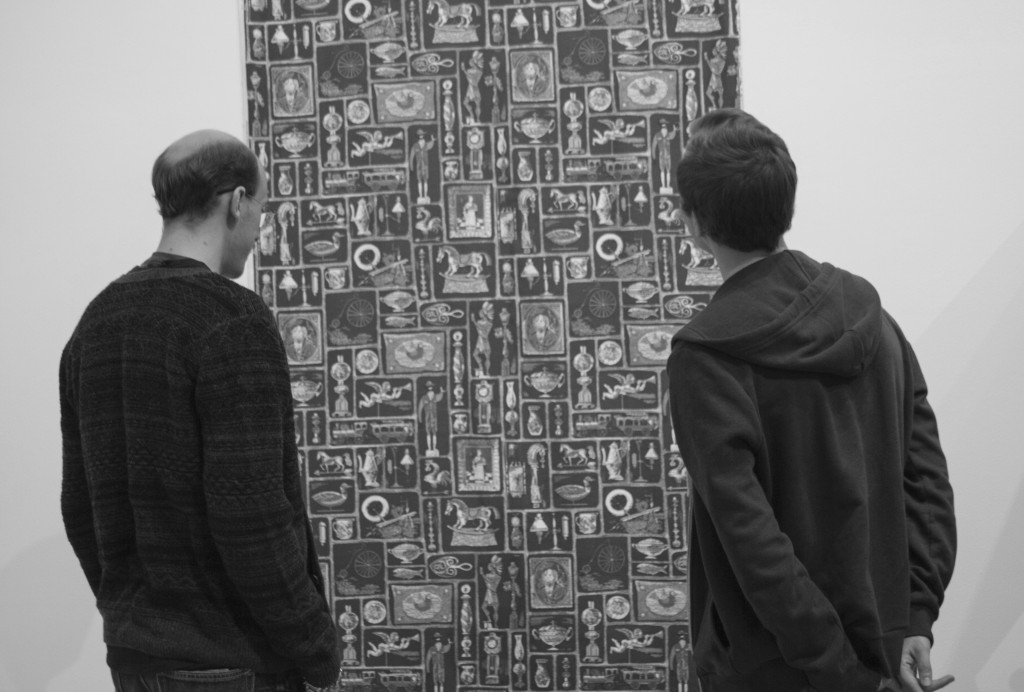
As time went on I found it easier to follow and things began to stand out. The most memorable was that Rob seemed to be moving much faster than Tom. They also did not follow the same path when walking through different parts of the exhibition. Tom seemed to follow more along the sequential order of how the objects were placed while Rob would sometimes walk past objects out of order and more than once. As we were leaving the museum, I asked each why they thought that might have been the case and it seemed to boil down to a difference of opinions as to what is important to look at. For Tom, the information provided on plaques throughout an exhibit are just as important to look at as the objects themselves as they often provide information for him to better contextualize what he is seeing within a larger picture. Rob on the other hand prefers to focus more on the objects only reading accompanying information once something particularly sparks his interest. Rob also pointed out that he generally finds such information to be “boring” and prefers insight into the artist’s perspective to background information that he could find online.
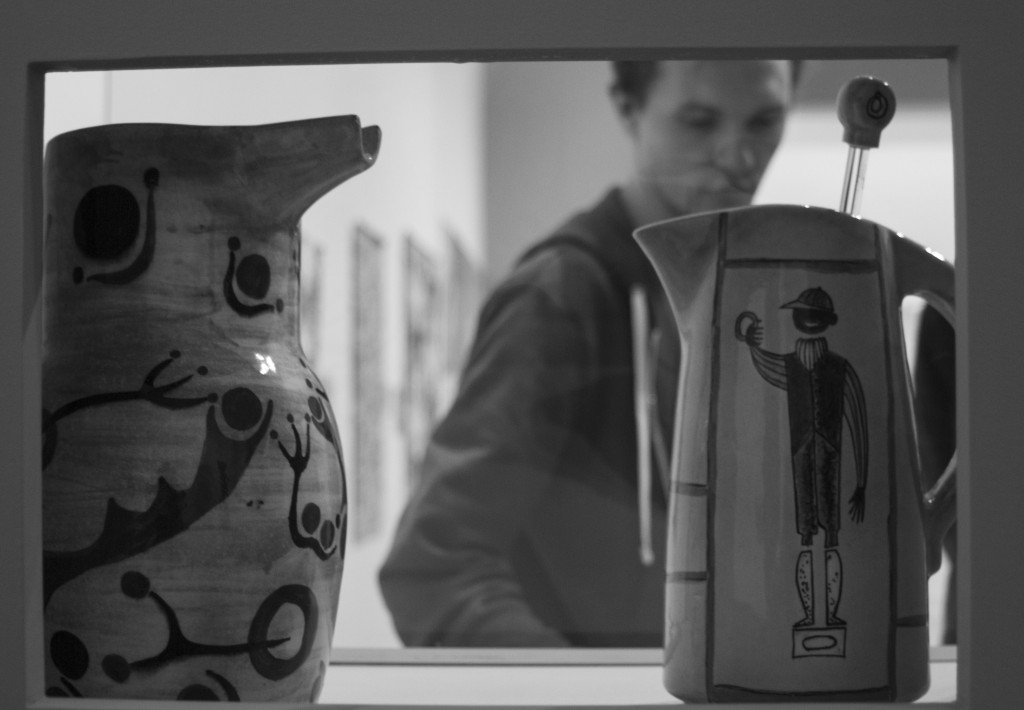
I do not think that either one is more correct in their method of viewing an exhibit, just as two individuals are unlikely to have the same perceptions of a work of art, each visitor to a museum brings with them their own unique perspective and set of expectations. It is then up to the museum to figure out how to balance its own unique and meticulously thought out perspective with that of the community it serves. By providing items such as handouts, hosting talks, and even private tours at very little to no cost, museums such as the Beach ensure that visitors with varying expectations and interests are able to get the most out of their museum experience.
